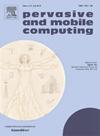Load-balancing model using game theory in edge-based IoT network
IF 3.5
3区 计算机科学
Q2 COMPUTER SCIENCE, INFORMATION SYSTEMS
引用次数: 0
Abstract
To manage increasing volume of IoT data, edge computing offers scalable solutions, but increasing data loads can overwhelm edge nodes, depleting resources and extending processing times. This paper proposes a load-balancing model using game theory (LMGT) in edge computing-assisted IoT networks by considering nodes lifetime as their primary resource to reduce IoT task execution times, especially for time-sensitive tasks. Simulation results demonstrate that LMGT outperforms existing methods—Preference-Based Stable Mechanism (PBSM), Centralized, Min-Min, and Max-Min—in terms of execution time reductions achieving improvements of, on average, 40 %, 56 %, 91 %, and 93 %, respectively, across various combinations of edge and IoT nodes. Furthermore, the proposed scheme ensures a more uniform distribution of data load across edge nodes compared to the existing schemes.
基于博弈论的边缘物联网负载均衡模型
为管理日益增长的物联网数据量,边缘计算提供了可扩展的解决方案,但不断增加的数据负载会使边缘节点不堪重负,从而耗尽资源并延长处理时间。本文提出了边缘计算辅助物联网网络中的博弈论负载平衡模型(LMGT),将节点寿命视为其主要资源,以减少物联网任务的执行时间,尤其是对时间敏感的任务。仿真结果表明,LMGT 在缩短执行时间方面优于现有方法--基于偏好的稳定机制 (PBSM)、集中式、最小最小和最大最小,在不同的边缘和物联网节点组合中平均分别提高了 40%、56%、91% 和 93%。此外,与现有方案相比,拟议方案可确保数据负载在边缘节点间的分布更加均匀。
本文章由计算机程序翻译,如有差异,请以英文原文为准。
求助全文
约1分钟内获得全文
求助全文
来源期刊

Pervasive and Mobile Computing
COMPUTER SCIENCE, INFORMATION SYSTEMS-TELECOMMUNICATIONS
CiteScore
7.70
自引率
2.30%
发文量
80
审稿时长
68 days
期刊介绍:
As envisioned by Mark Weiser as early as 1991, pervasive computing systems and services have truly become integral parts of our daily lives. Tremendous developments in a multitude of technologies ranging from personalized and embedded smart devices (e.g., smartphones, sensors, wearables, IoTs, etc.) to ubiquitous connectivity, via a variety of wireless mobile communications and cognitive networking infrastructures, to advanced computing techniques (including edge, fog and cloud) and user-friendly middleware services and platforms have significantly contributed to the unprecedented advances in pervasive and mobile computing. Cutting-edge applications and paradigms have evolved, such as cyber-physical systems and smart environments (e.g., smart city, smart energy, smart transportation, smart healthcare, etc.) that also involve human in the loop through social interactions and participatory and/or mobile crowd sensing, for example. The goal of pervasive computing systems is to improve human experience and quality of life, without explicit awareness of the underlying communications and computing technologies.
The Pervasive and Mobile Computing Journal (PMC) is a high-impact, peer-reviewed technical journal that publishes high-quality scientific articles spanning theory and practice, and covering all aspects of pervasive and mobile computing and systems.
 求助内容:
求助内容: 应助结果提醒方式:
应助结果提醒方式:


